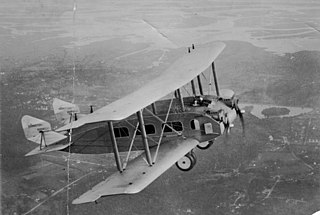
The Avro 691 Lancastrian was a British and Canadian passenger and mail transport aircraft of the 1940s and 1950s developed from the Avro Lancaster heavy bomber. The Lancastrian was basically a modified Lancaster bomber without armour or armament and with the gun turrets replaced by streamlined metal fairings, including a new nose section. The initial batch was converted directly from Lancasters; later batches were new builds.

The Bristol Type 170 Superfreighter Mk 32 was a larger, stretched version of the Bristol Freighter designed for Silver City Airways for use on the short air ferry routes to France.

Vincent Justus Burnelli was an American aeronautics engineer, instrumental in furthering the lifting body and flying wing concept.

The PZL-105 Flaming (flamingo) is a Polish short-takeoff-and-landing (STOL) utility aircraft designed by PZL "Warszawa-Okęcie". It remained a prototype.
The Auster Avis was a four-seat light aircraft developed from the Auster Autocrat. It featured a redesigned fuselage incorporating four doors and a circular cross-section towards the tail, new undercarriage, and new wing flaps. It was planned in two versions, the Mk 1 for civil use, and the Mk 2 for military and air ambulance duties. However, only two prototypes were built, and Auster abandoned the project in favour of the Auster J-5 Autocar.

The Burnelli UB-14, also known as the Cunliffe-Owen Clyde Clipper, was a 1930s American prototype lifting-fuselage airliner designed and built by Vincent Burnelli.
The Piper PA-6 Sky Sedan was a 1940s American four-seat light aircraft designed and built in prototype form by Piper Aircraft at its Lock Haven, Pennsylvania, factory.

The Spencer Amphibian Air Car is an American light amphibious aircraft. The name was first used in 1940 for a prototype air vehicle that developed into the Republic Seabee. The name was later used by its designer Percival Spencer for a series of homebuilt amphibious aircraft roughly based on the Seabee design.

The Custer CCW-5 was a twin-engined, 5-seat aircraft of pusher configuration, which used a channel wing claimed to enable low speed flight and short take-offs. Two CCW-5s flew, eleven years apart, but the type never entered production.

The Burnelli CB-16, also known as the Uppercu-Burnelli CB-300, was a passenger aircraft designed by the American company Burnelli in 1928. It was the first twin-engined aircraft to have retractable landing gear. Only one was built.

The Burnelli RB-1 was a US twin engine biplane airliner prototype from 1920, incorporating a lifting body fuselage.

The LAK-12 is a Lithuanian mid-wing, single-seat, FAI Open Class glider that was designed and produced by Lietuviškos Aviacinės Konstrukcijos (LAK) in Lithuania and later by Sportine Aviacija and Sport Aviation USSR.

The Jora Jora is a high wing, T-tail, single-engine, two-seat ultralight designed in the Czech Republic in 1993. More than 160 had been sold by 2009.
The O'Neill Model J Magnum, also called the Magnum Jake and the Magnum Pickup, is a homebuilt aircraft design for bush flying operations similar to the de Havilland Beaver.
The Normand Dube Aerocruiser Plus is a four-seat Canadian amateur-built aircraft, designed by Normand Dube and produced by Aviation Normand Dube of Sainte-Anne-des-Plaines, Quebec. The aircraft is a development of the two-seat Norman Dube Aerocruiser.
The Continental KB-1, also known as KB-1 Military Biplane or KB-1 Continental Pusher, is an early design developed by the engineer Vincent Burnelli.
The Swiss Piccard Eureka was designed to be an easily transportable single seat three-axis ultralight. Its development was brought to a halt by the Swiss ban on ultralight aircraft in 1984.
The Bagalini Bagalini is an Italian homebuilt ultralight aircraft that was designed by Marino Bagalini. The aircraft is supplied in the form of plans for amateur construction.

The Christavia Mk IV (Christ-in-Aviation) is a Canadian homebuilt aircraft that was designed by Ron Mason and produced by Elmwood Aviation of Frankford, Ontario. The aircraft is supplied in the form of plans for amateur construction.

The Stolp SA-900 V-Star is an American aerobatic homebuilt biplane, currently produced by Aircraft Spruce & Specialty Co in the form of plans for amateur construction. In the 1990s it was also available as a kit from Stolp Starduster Corporation of Riverside, California.

















